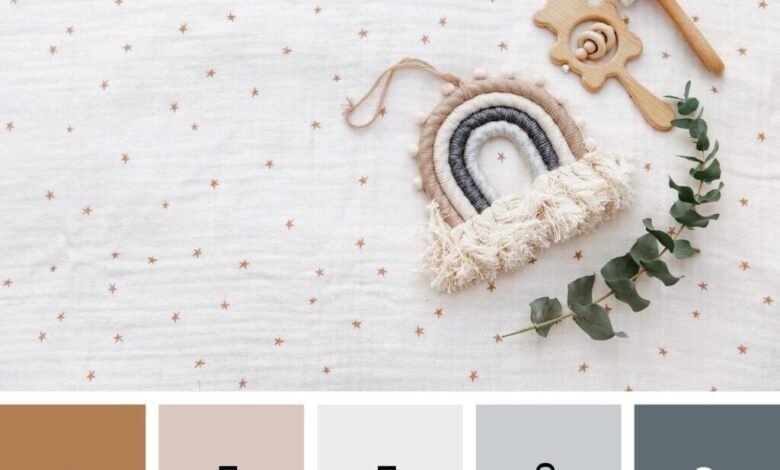Lululemon Hex Codes for Design

Lululemon has become synonymous with premium athletic wear, but their influence extends far beyond yoga studios and fitness centers. Designers, marketers, and brand enthusiasts frequently seek out the exact color specifications used by this iconic brand. Whether you’re creating a website, designing promotional materials, or developing a complementary product line, understanding Lululemon’s signature palette can elevate your work. According to Trends Magazine, color psychology plays a crucial role in brand recognition, and Lululemon’s carefully curated hues contribute significantly to their market dominance.
The athletic apparel industry thrives on visual appeal, and Lululemon has mastered the art of color selection. Their seasonal releases feature everything from calming neutrals to vibrant statement shades that resonate with their target audience. For designers working on projects related to wellness, fitness, or lifestyle brands, accessing accurate hex codes ensures consistency and professionalism across all digital and print materials.
Understanding Lululemon’s Color Philosophy
Lululemon approaches color selection with intentionality. Each shade reflects their commitment to mindfulness, performance, and style. The brand regularly introduces new colors while maintaining classic favorites that customers return to season after season. From the energizing pops of their brighter tones to the sophisticated depth of their neutrals, every color serves a purpose in their overall aesthetic strategy.
The company’s design team considers multiple factors when developing their palette. They examine current fashion trends, customer feedback, and performance requirements. Some colors work better for high-intensity workouts, while others suit meditation or casual wear. This thoughtful approach has resulted in a distinctive color library that sets Lululemon apart from competitors. You can explore the complete range of lululemon color codes to understand the breadth of their offerings.
Essential Neutral Hex Codes
Neutrals form the foundation of Lululemon’s collection. These versatile shades complement virtually any wardrobe and appeal to customers seeking timeless pieces. Black remains a staple, represented by hex code #000000, though Lululemon often uses slightly warmed or cooled variations to add depth. Their True Navy registers around #1F2A44, offering a sophisticated alternative to pure black.
Gray tones appear frequently across their product lines. Heathered Core Medium Grey typically falls near #8B8B8B, while their lighter grays hover around #C4C4C4. These shades provide neutral backdrops that allow brighter accent colors to shine. White products generally use #FFFFFF, though they occasionally introduce cream or off-white variations for softer aesthetics.
Beige and tan options have gained popularity in recent years. Desert Teal presents as #CDB5A7, bridging the gap between pink and brown undertones. Trench, another beloved neutral, sits around #C9B8A3. These earthy tones align with the brand’s wellness-focused identity and appeal to customers seeking understated elegance.
Popular Core Color Hex Codes
Beyond neutrals, Lululemon maintains a selection of core colors that appear consistently across collections. These shades have developed loyal followings and often sell out quickly when restocked. Understanding these hex codes helps designers create cohesive projects that capture Lululemon’s essence.
Red options range from bold to subdued. Their Dark Red approximates #8B1A1A, while brighter reds approach #D32F2F. Pink variations include soft pastels around #F8BBD0 and deeper rose tones near #C2185B. These warm colors energize designs and attract attention in marketing materials.
Blue shades span the spectrum from pale to deep. Chambray Blue registers near #5B7C99, offering a muted denim-inspired option. Cerulean Blue brightens to approximately #00A1DE, perfect for summer collections. Navy tones provide sophistication, with variations ranging from #1A237E to the previously mentioned True Navy.
Seasonal and Limited Edition Colors
Lululemon regularly introduces seasonal colors that reflect current trends and customer preferences. These limited releases create excitement and urgency among shoppers. Spring collections often feature pastel hex codes like soft lavender (#E1BEE7) and mint green (#B2DFDB). Summer brings vibrant coral (#FF6E40) and turquoise (#00BCD4) options that evoke vacation vibes.
Fall collections embrace warmer tones. Burnt orange appears around #E65100, while deep burgundy registers near #880E4F. Olive and forest greens (#556B2F and #1B5E20) connect to nature and complement autumn fashion trends. Winter releases feature jewel tones and deeper shades, including sapphire blue (#0D47A1) and emerald green (#00695C).
Limited edition collaborations sometimes introduce entirely unique colors. These special releases may feature custom hex codes developed specifically for partnerships or events. Tracking these variations helps designers stay current with Lululemon’s evolving aesthetic and anticipate future trends in the athletic wear industry.
How to Use Lululemon Colors in Your Designs
Implementing Lululemon-inspired colors requires strategic thinking. Start by identifying your project’s primary goal. Fitness apps benefit from energizing brights, while wellness websites might emphasize calming neutrals. Balance is key. Pair vibrant accent colors with neutral backgrounds to prevent visual overwhelm.
Consider color psychology when making selections. Blues promote trust and calm, making them ideal for meditation or recovery-focused content. Reds and oranges energize and motivate, perfect for high-intensity workout materials. Greens connect to nature and balance, supporting holistic health messaging.
Test your color combinations across different devices and lighting conditions. Hex codes appear differently on various screens, and what looks perfect on your desktop might seem washed out on mobile devices. Create mockups and gather feedback before finalizing your palette. This extra step ensures your designs maintain their intended impact regardless of viewing conditions.
Finding Accurate Color Codes
Locating precise hex codes requires reliable resources. Official Lululemon materials provide the most accurate references, though the company doesn’t publicly publish comprehensive color specifications. Color extraction tools allow you to pull hex codes from product images, though lighting and photography adjustments may affect accuracy.
Designer communities and fan sites compile color information based on product releases and customer observations. These crowdsourced databases offer valuable starting points, though independent verification improves reliability. When precision matters, consider purchasing actual Lululemon products and using color matching tools to determine exact specifications.
Professional color calibration equipment provides the highest accuracy for critical projects. Spectrophotometers measure exact color values, ensuring your designs match physical products perfectly. While this approach requires investment, brands developing licensed products or official partnerships benefit from this level of precision.
Pairing Lululemon Colors Effectively
Successful color pairing creates visual harmony and reinforces your message. Monochromatic schemes using different shades of one color provide sophisticated simplicity. Combine light gray (#E0E0E0) with medium gray (#757575) and charcoal (#424242) for clean, modern aesthetics that mirror Lululemon’s minimalist approach.
Complementary colors opposite each other on the color wheel create dynamic contrast. Pair navy blue (#1F2A44) with coral (#FF7043) for eye-catching designs that maintain balance. Analogous colors sitting adjacent on the wheel offer harmonious combinations. Combine teal (#00897B), turquoise (#00BCD4), and blue (#0288D1) for cohesive gradients.
Triadic color schemes use three evenly spaced hues for vibrant yet balanced designs. Purple (#7B1FA2), orange (#F57C00), and green (#388E3C) create energetic palettes suitable for promotional materials. Experiment with different proportions, using one color as the dominant shade while others serve as accents.
Digital vs. Print Color Considerations
Hex codes work perfectly for digital applications but require conversion for print projects. RGB color models power screen displays, while CMYK models control printing processes. Converting between these systems sometimes shifts colors slightly, particularly with vibrant blues and purples that fall outside CMYK gamut.
Before printing, create test swatches to verify color accuracy. What appears perfect on screen might print darker or duller depending on paper stock and ink quality. Professional printers offer color matching services that adjust CMYK values to approximate original hex codes as closely as possible.
Consider pantone matching systems for critical print applications. While more expensive than standard CMYK printing, pantone inks provide consistent color reproduction across different print runs and materials. This consistency proves valuable for branded materials requiring perfect color matching to Lululemon references.
Maintaining Brand Consistency
When using Lululemon-inspired colors, maintain consistency across all touchpoints. Document your selected hex codes in a style guide that team members can reference. Include usage guidelines specifying which colors work for backgrounds, text, buttons, and other elements.
Create templates incorporating your chosen palette to streamline future projects. Consistent color application builds recognition and professionalism. Whether designing social media graphics, website pages, or printed materials, adherence to established color standards ensures cohesive brand presentation.
Regular audits help identify inconsistencies before they become problems. Review all branded materials quarterly, checking that colors match specifications. Technology updates and software changes sometimes alter color rendering, making periodic verification essential for maintaining quality standards.
Conclusion
Lululemon’s carefully curated color palette offers inspiration for designers across industries. From essential neutrals to seasonal statement shades, their hex codes provide building blocks for creating visually appealing, on-brand designs. Understanding these colors, their psychological impacts, and proper implementation techniques elevates any project related to fitness, wellness, or lifestyle branding. Whether you’re designing digital experiences or print materials, accurate color specification ensures professional results that resonate with your target audience. By studying Lululemon’s approach to color and applying these principles strategically, you can create designs that capture the same sophisticated, active aesthetic that has made the brand a global phenomenon.
Frequently Asked Questions
What are the most popular Lululemon colors?
The most popular Lululemon colors include classic neutrals like black, white, and various grays, along with signature shades like True Navy and their seasonal favorites. Colors like Align Blue, Heathered Core Medium Grey, and various pink and burgundy tones consistently rank among customer favorites across different product lines.
Can I use Lululemon colors for my own brand?
You can use similar color palettes for inspiration, as hex codes themselves aren’t protected by trademark law. However, avoid creating designs that might cause consumer confusion or suggest official affiliation with Lululemon. Use colors as aesthetic inspiration while developing your own unique brand identity and visual language.
How often does Lululemon release new colors?
Lululemon typically releases new colors with each seasonal collection, generally four times per year. They also introduce limited edition shades throughout the year for special collaborations or events. Some colors become permanent additions to their core palette, while others remain available only for specific seasons.
Where can I find updated Lululemon color information?
Updated color information appears on the official Lululemon website with each product release. Designer communities, fashion blogs, and fan sites also compile color names and approximate hex codes. For the most accurate specifications, examining actual products with color extraction tools provides reliable results.
Do Lululemon colors look the same across different fabrics?
Colors can appear slightly different across various fabrics due to texture, finish, and material composition. Smooth, shiny fabrics often show colors more vibrantly than matte or textured materials. Lululemon maintains color consistency within each fabric type, though the same color name might appear subtly different on Luon versus Nulu fabric.
Read More:
Cool things to do with a laptop

